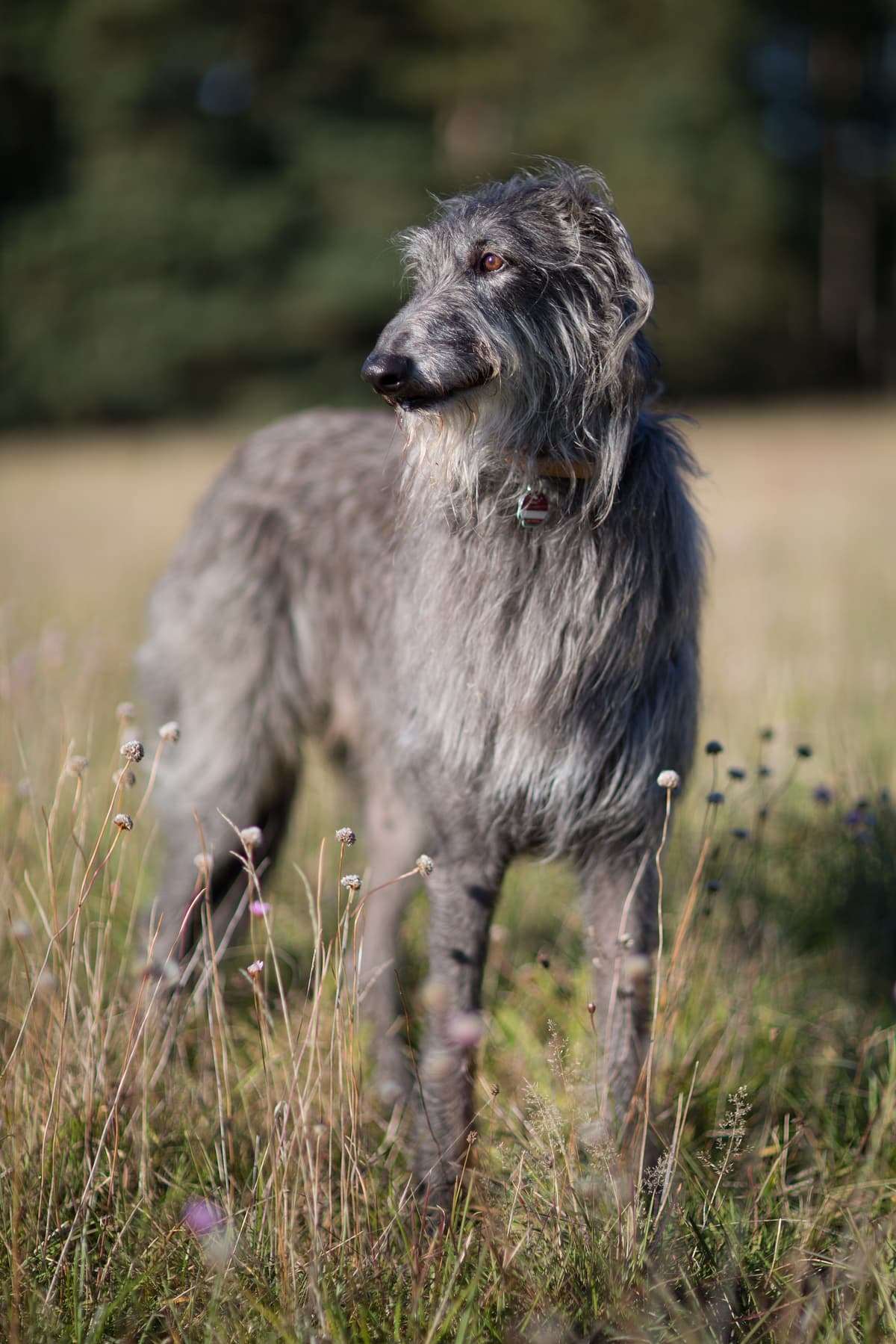Scottish Deerhound vs Labrador Retriever
Discover the differences between Scottish Deerhound and Labrador Retriever to make the best choice for your situation.
Try different breeds

Scottish Deerhound
Elegant and gentle, this breed combines quiet dignity with a loving, loyal nature. Known for their athletic build and calm temperament, they thrive as affectionate companions.

Labrador Retriever
Eager, friendly, and intelligent, this breed loves being part of an active family. Their gentle nature and loyalty make them outstanding companions for all ages.
Quick comparison
Large
39–50 kg
Harsh, wiry
8–11 years
34–43 kg
Moderately active
Large
29–36 kg
Short double coat, water-resistant
10–12 years
25–32 kg
High energy
Personality & behavior
Compare the personality traits and behavioral characteristics of both breeds.
Scottish Deerhound
Gentle and friendly with family and strangers
Quick learner, responds well to training
Moderate exercise needs, enjoys daily walks
Occasionally playful, but not overly exuberant
Adjusts to calm homes, dislikes city bustle
Labrador Retriever
Warm and sociable with people and animals
Quick learner, responds well to training
High stamina, enjoys active pursuits daily
Loves games and interactive activities
Adjusts easily to new situations and environments
Care needs
Exercise, grooming, and daily care requirements
Scottish Deerhound
Cardiomyopathy, osteosarcoma
Labrador Retriever
Hip dysplasia, elbow dysplasia
Suitability
How well each breed fits different living situations and families
Scottish Deerhound
Challenging for novices
Their size and needs require experience and commitment from owners
Not apartment friendly
They need space and may struggle in small living quarters
Highly suitable
Their athleticism matches well with active lifestyles and regular exercise
Generally gentle
Usually patient but can be knocked over due to their large size
Usually compatible
Often sociable with other dogs, but prey drive may affect small pets
Prone to loneliness
They dislike being left alone for extended periods
Labrador Retriever
Great choice
Patient and eager to please, Labradors are manageable for most first-time owners.
Not ideal
Labradors need space and exercise, so apartments can limit their activity needs.
Perfect fit
High energy and stamina make them excellent for active individuals or families.
Highly suitable
Gentle temperament and playful nature make them safe and loving with young children.
Very friendly
Generally sociable and get along well with other dogs and pets.
Prone to anxiety
Extended alone time can lead to boredom and destructive behaviors in this breed.
Breed strengths
What each breed excels at and their best qualities
Scottish Deerhound
- Gentle and calm with family members
- Excellent with children and other dogs
- Quiet and rarely barks unnecessarily
- Low aggression toward people and animals
- Adaptable to relaxed indoor environments
Labrador Retriever
- Friendly and sociable with people and dogs
- Highly trainable and eager to please
- Excellent with children and families
- Strong retrieving and swimming abilities
- Generally adaptable to various living situations
Challenges & considerations
Potential challenges and considerations for each breed
Scottish Deerhound
- Needs large, secure space for exercise
- Prone to heart and bone health issues
- Sensitive to anesthesia and some medications
- Can be stubborn with obedience training
- High prey drive toward small animals
Labrador Retriever
- Prone to obesity without portion control
- Can become destructive if under-exercised
- Heavy seasonal shedding requires regular grooming
- May develop hip or elbow dysplasia
- Needs significant daily physical activity
Ready to choose your perfect breed?
Learn more about each breed or compare other breeds to find the perfect match for your lifestyle.
Discover more helpful tools
Make use of our other free tools to get the most out of your pet experience
